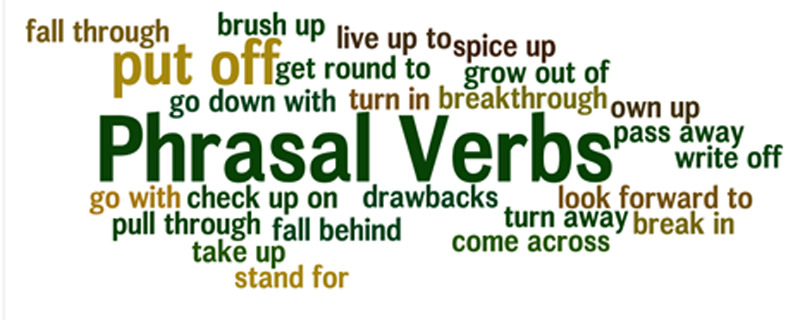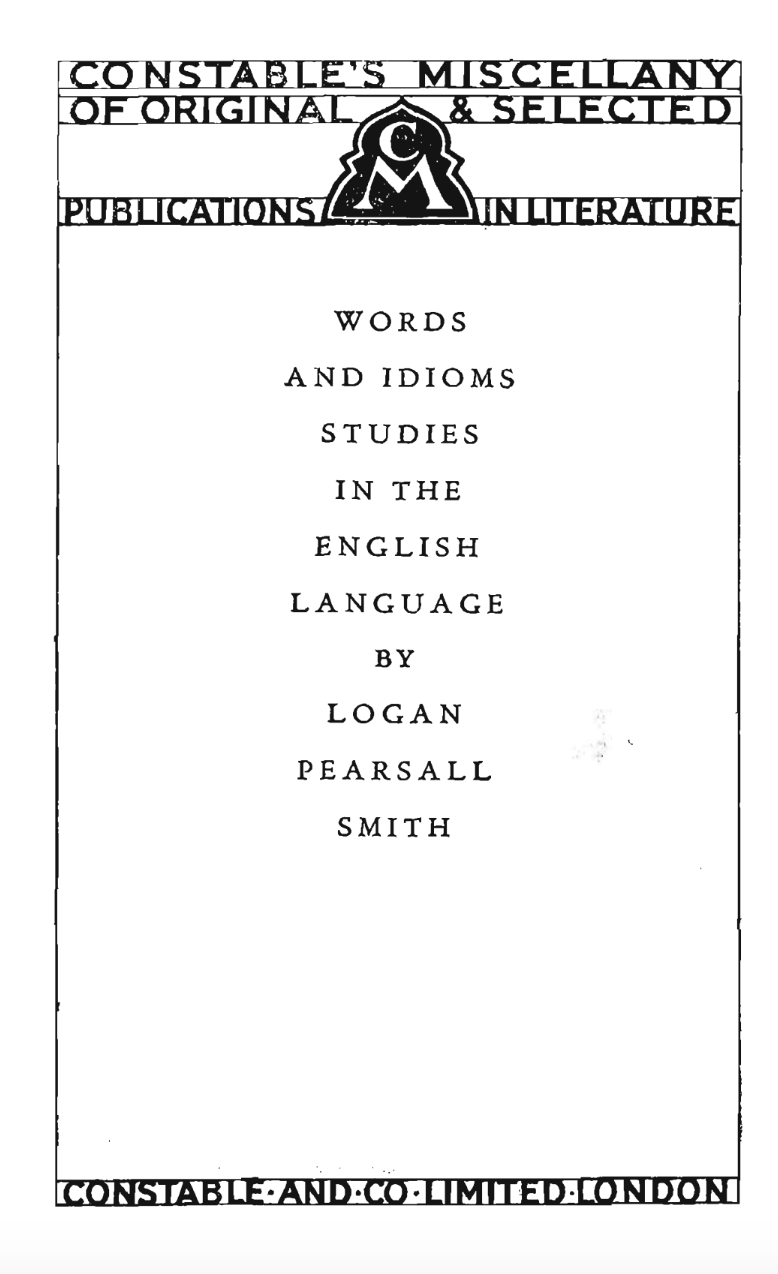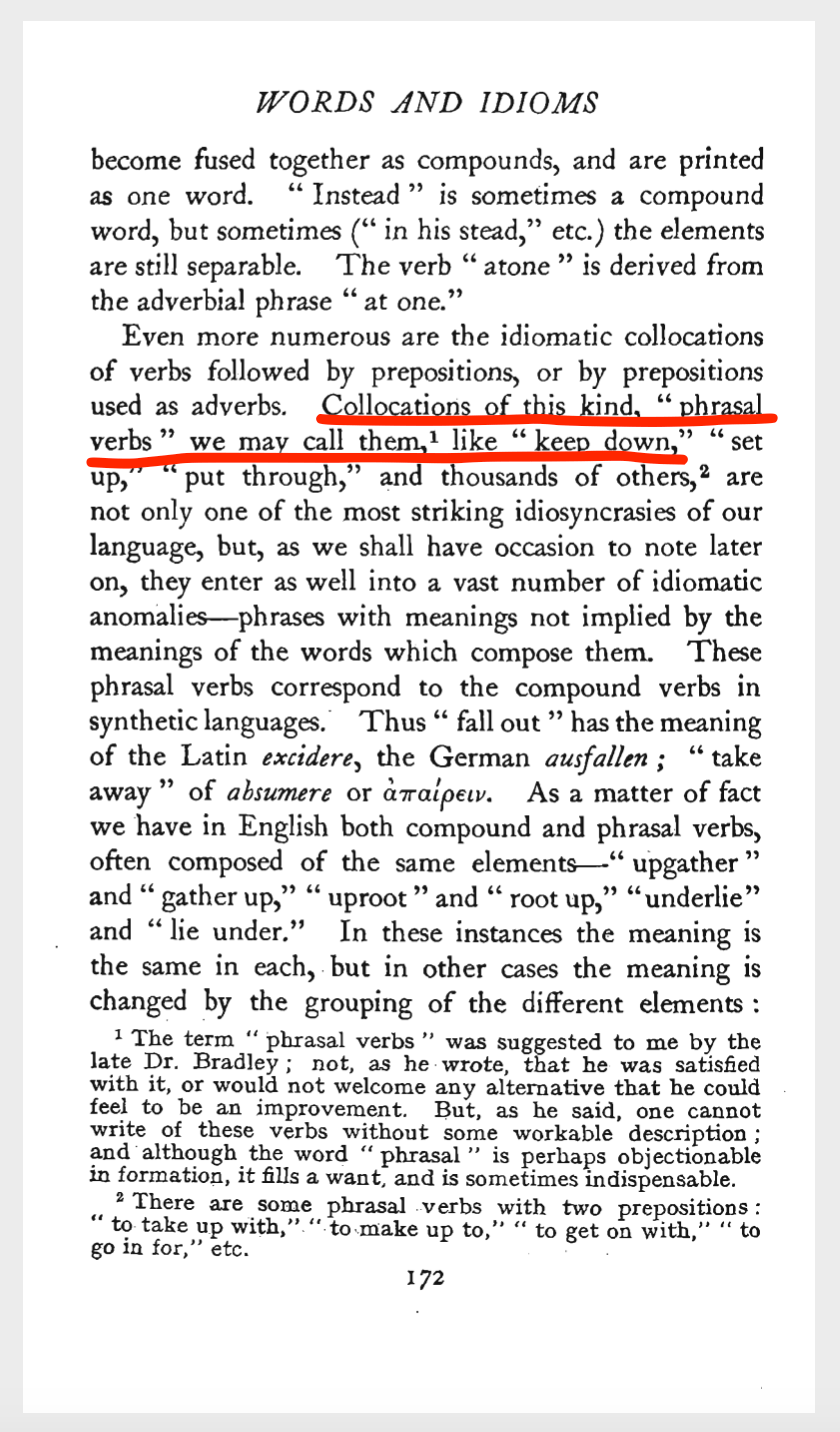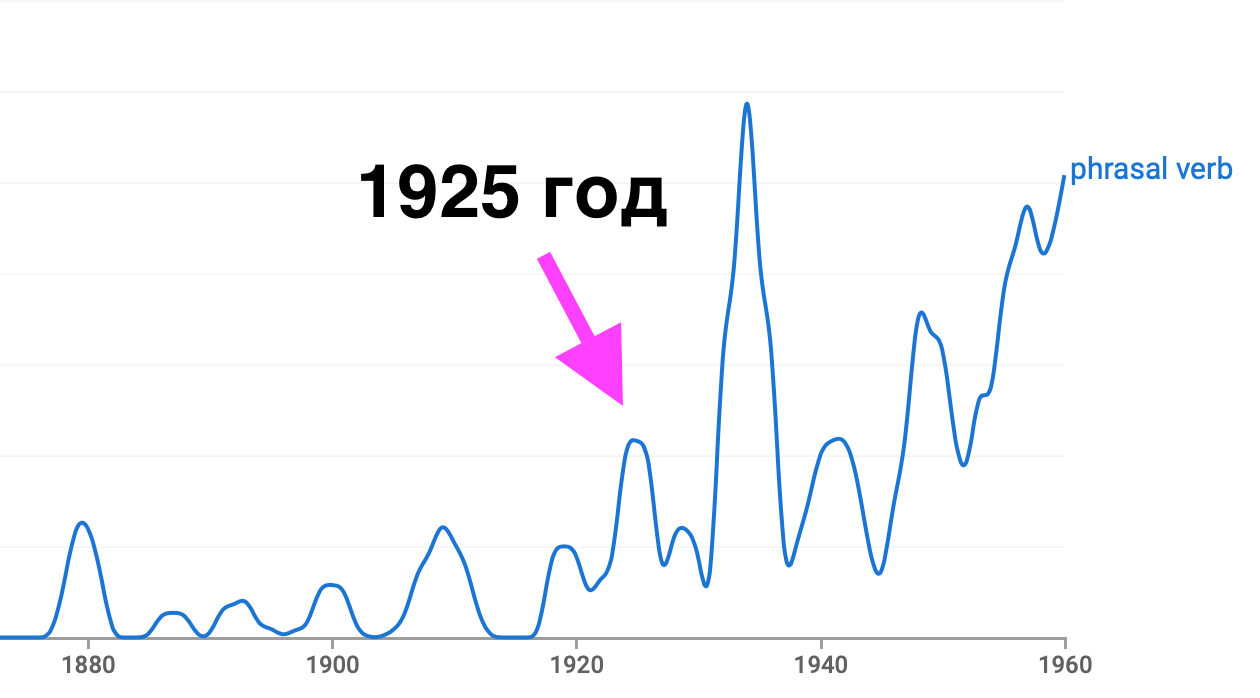What are phrasal verbs
What are phrasal verbs
What Are Phrasal Verbs?
Receive Weekly Lessons By Email
Sign-up to our free weekly English lessons and receive great articles about grammar and vocabulary in your inbox.
In last week’s article, I wrote about phrasal verbs with get and gave some examples on how to use them (Read the article about phrasal verbs with the verb get here). Phrasal verbs are not easy to learn and use which is why I wanted to write an article about what they are how to use them.
Please feel free to ask me questions at the bottom of this page if you have any questions about how to use phrasal verbs.
What is a phrasal verb?
A phrasal verb is a verb combined with a preposition or adverb (or both) that means something different from each of the words that make up the verb.
Example:
As you can see above, phrasal verbs have a completely different meaning to the verb. This is where a lot of people learning English find it difficult to learn phrasal verbs. Native English speakers just know them like any other word or expression in the English language.
Separable or Inseparable
There are two types of phrasal verbs. Separable phrasal verbs can be broken up by other words, while inseparable phrasal verbs cannot be separated by other words.
Separable phrasal verb example:
Can you take your shoes off?
Can you take off your shoes?
In the example above, you can see that the preposition can be separated from the verb or not. In the example above, take off means to remove and can be used in both ways.
Inseparable phrasal verb example:
When will the plane take off?
Here, the meaning of take off is to leave. When the phrasal verb take off has this meaning, we cannot separate the the verb and preposition.
Look out for the car!
In the example above, we cannot separate the preposition from the verb. I would be strange to say: “Look for the car out” (wrong)
More information about phrasal verbs
In the English language we have over 50,000 phrasal verbs! Yes, that’s correct over 50,000! Think of all the verbs we have in the English language, then think about all the prepositions and some adverbs and try to put them together. There are a lot!
Let’s just look at the verb take and see how many variations we have (there are more but this is just an example).
As you can see, we already have 10 phrasal verbs with just the verb take (and there are more). And to make things a bit more complicated, each phrasal verbs can have more than one meaning. Some phrasal verbs have up to 15 meanings depending on the context.
As an exercise for you to learn more about phrasal verbs, I suggest you use Google to check how many meanings each of the phrasal verbs above has. And in next week’s article, I will give you example of each meaning. I will also explain in a future article the difference between literal and idiomatic phrasal verbs.
‍
If you want to learn more about phrasal verbs, I recommend buying a dictionary like this one HERE from Collins on Amazon.
‍
Please ask below if you have any questions about phrasal verbs. I will be more than happy to help you learn and understand what they are.
At Speak English Institute, we help people improve their communication skills in English & Arabic. We have helped over 6,300 students become confident В speaking English or Arabic since 2013!
Request a call back
Get a call back from one of our friendly and professional coordinators.
What are Phrasal Verbs
What are Phrasal Verbs
Some verbs in English can be made up of more than one word. Such verbs generally consist of a verb and a preposition or adverb. Therefore, a phrasal verb is a verb that consists of a verb and another element. The addition of the new element often creates a new meaning for the verb. For example,
He turned down the job offer. (turn + down = refuse)
I ran into your husband yesterday at the market. (run + into) = meet
You can count on me. (count + on = trust)
Examples of Phrasal Verbs
Phrasal Verb
Composition
Meaning
Example
The police looked into the matter.
You cannot get away easily.
Use up one’s supply of something.
We ran out of milk this morning.
You have to hand in the report by tomorrow.
Don’t move, hold on to the rail.
She passed out on the stairs.
The firemen broke into the house to rescue the old woman.
Some phrasal verbs are intransitive. This means that they cannot take an object.
His boss suddenly showed up.
Some phrasal verbs can be followed by an object. These are called transitive phrasal verbs. Phrasal verbs can be divided into separable phrasal verbs and inseparable phrasal verbs. This categorization is based on the position of the object.
Separable Phrasal Verbs
Separable phrasal verbs are the verbs where the object is placed between the verb and the preposition/adverb. Here, the verb and the particle can be separated.
He talked his mother into lending him money.
Write this down before you forget.
Inseparable Phrasal Verbs
Unlike separable phrasal verbs, some phrasal verbs cannot be separated. The object is placed after the particle in such verbs.
I ran into some friends of yours.
I don’t think I’ll ever get over his loss.
His youngest son takes after his wife.
However, some transitive phrasal verbs can take an object in both places.
She gave your dress back. = She gave back your dress.
He looked up the word in the dictionary.
Phrasal Verbs with Prepositions
Although many transitive verbs can take objects in both positions, the object must be between the verb and the preposition if the object is a personal pronoun.
He gave your money back.→ He gave it back.
I looked your number up in the phone book.→ I looked it up.
We’ll be leaving behind our son.→ We’ll be leaving him behind.
63 Most Common English Phrasal Verbs (with Meanings and Examples)
Phrasal verbs are when we combine a verb with a preposition of another grammatical element, and end up with a completely new meaning.
They’re used constantly by native speakers in spoken and written English, which makes them important to know.
In this English phrasal verbs list, we’ll show you 63 of the most common phrasal verbs, conveniently organized by type.
Afterwards, you’ll find a complete lesson on what phrasal verbs are, how to form them, and how to learn them effectively.
But to give you an introduction before we jump into the list, here’s a quick video explanation:
Contents
Download: This blog post is available as a convenient and portable PDF that you can take anywhere. Click here to get a copy. (Download)
Most Common English Phrasal Verbs
1. Bring up
Type: Separable, transitive
Meaning: To mention something.
Example: “Mark was sick and had to miss the party, so please don’t bring it up, I don’t want him to feel bad for missing it.”
2. Bring on
Type: Separable, transitive
Meaning: To cause something to happen, usually something negative.
Example: “His lung cancer was brought on by years of smoking.”
3. Bring it on!
Type: Separable, transitive
Meaning: To accept a challenge with confidence.
Example: “You want to have a race? Bring it on! I can beat you!”
4. Call on (1)
Type: Inseparable, transitive
Meaning: To visit someone.
Example: “I’ll call on you this evening to see how you’re feeling.”
5. Call on (2)
Type: Inseparable, transitive
Meaning: To use someone’s or something’s knowledge.
Example: “I may need to call on the university’s excellent professors in order to answer your question.”
6. Call off
Type: Separable, transitive
Meaning: To cancel something.
Example: “We had to call off the picnic because of the rain.”
7. Check in
Type: Inseparable, intransitive
Meaning: To register at a hotel for a stay.
Example: “We haven’t checked in at the hotel yet.”
8. Check out
Type: Separable, transitive
Meaning: To see something or try something out in order to learn more about it.
Example: “Check out my new car!”
9. Cheer on
Type: Separable, transitive
Meaning: To support someone by giving them words of encouragement.
Example: “Even though Samantha was in the last place, her brother cheered her on through the entire race.”
10. Cheer up
Type: Separable, transitive
Meaning: This phrase can either be used as a phrase of encouragement said to someone who seems sad (just saying “cheer up!” to them), or it can mean to try to make someone happier.
Example: “Andrew was having a bad day, so his girlfriend cheered him up by taking him out for ice cream.”
11. Come up (with something)
Type: Inseparable, transitive
Meaning: To think of an idea.
Example: “I came up with this idea for a TV show about a woman living with her best friend and daughter. I call it ‘Two and a Half Women.’”
12. Come up (1)
Type: Inseparable, intransitive
Meaning: To bring up a topic.
Example: “I wanted to tell her that I got a new job but the chance never came up.”
13. Come up (2)
Type: Inseparable, intransitive
Meaning: When something happens unexpectedly.
Example: “I was going to meet my friends for dinner, but something came up so I had to cancel.”
14. Come in
Type: Inseparable, intransitive
Meaning: To enter.
Example: “‘Come in, the door is open!’ said the grandmother to the wolf.”
15. Come across
Type: Inseparable, transitive
Meaning: To meet or find by chance.
Example: “I was cleaning the attic and I came across my high school uniform. Can you believe it still fits?”
16. Come forward
Type: Inseparable, intransitive
Meaning: To volunteer information about something, like a crime.
Example: “The police are encouraging people to come forward with any information about the kidnapped girl.”
17. Cut off
Type: Separable, transitive
Meaning: This phrase can be used in several ways, but its general meaning is “to interrupt or stop something.”
Example: “His father is rich but he cut him off without any money of his own.”
18. Cut (it) out
Type: Separable, transitive
Meaning: This phrase has the same meaning as saying “Stop it.”
Example: “Hey, cut it out! I was watching that movie, so stop changing the channel!”
19. Cut in
Type: Inseparable, intransitive
Meaning: To interrupt someone when they are speaking.
Example: “I was about to ask that girl on a date, but her friend cut in and I lost the chance.”
20. Drop by/in
Type: Inseparable, transitive / intransitive
Meaning: To stop by for a visit, for a short time.
Example: “Andrew is such a great boyfriend, when he heard that his girlfriend had a cold he dropped by to bring her some soup.”
21. Drop off
Type: Separable, transitive
Meaning: To leave something or someone in their destination.
Example: “I can give you a ride and drop you off at work.”
22. Fall apart
Type: Inseparable, intransitive
Meaning: This phrase means “to break into pieces,” but it can be used to talk about things that are not physical, like a marriage or a person.
Example: “They tried to save their marriage by going to therapy but in the end, it fell apart anyway.”
23. Fall down
Type: Inseparable, intransitive
Meaning: To drop to the ground, usually by accident.
Example: “My friend slipped on a banana peel and fell down. I thought that only happened in cartoons!”
24. Fill (someone) in
Type: Separable, transitive
Meaning: To give someone the details about something.
Example: “Quickly, let’s go! There’s no time to explain, I’ll fill you in on the way.”
25. Fill up
Type: Separable, transitive / intransitive
Meaning: To become completely full.
Example: “The little girl filled up on candy before dinner, and didn’t want to eat any of the chicken.”
26. Get away
Type: Inseparable, intransitive
Meaning: To escape. You may have heard the phrase “getaway car,” which can help you remember this phrasal verb. That’s the car used by criminals to run away from a crime scene, like a bank robbery.
Example: “Carmen’s neighbor tried to show her pictures of all her cats, but Carmen managed to get away.”
27. Get around
Type: Inseparable, transitive / intransitive
Meaning: To solve a problem by avoiding the main issue. This phrase can also be used very informally to refer to someone who has many sexual partners. As you can imagine, it’s not very nice to say that someone “gets around”!
Example: “Some people know all the different ways to get around tax laws.”
28. Get along (with)
Type: Inseparable, transitive / intransitive
Meaning: To have a friendly relationship with someone.
Example: “Some people are surprised that I get along with my mother-in-law really well!”
29. Get up
Type: Inseparable, intransitive
Meaning: To stand up, or to wake up.
Example: “I have so much trouble getting up in the morning that I have to set three alarms.”
30. Get back to
Type: Inseparable, transitive
Meaning: To return to someone or something. This phrase is often used to say that you will return with an answer to a question or a request at a later time.
Example: “Derek’s coworker wasn’t sure what time the meeting was, so he said he’d get back to him with the time.”
31. Get back at
Type: Inseparable, transitive
Meaning: To get revenge on someone.
Example: “Her ex-husband took her house so she got back at him by taking his dogs.”
32. Give out (1)
Type: Inseparable, intransitive
Meaning: To break down or stop working.
Example: “The city had to rebuild the bridge completely because it was about to give out and fall down.”
33. Give out (2)
Type: Separable, transitive
Meaning: To hand out or distribute something
Example: “He has a lot of contacts because he gives out his business card to everyone he meets.”
34. Give in
Type: Inseparable, intransitive
Meaning: To surrender, especially in a fight or argument.
Example:“ Ben’s mother gave in and let him stay out late with his friends.”
35. Give away
Type: Separable, transitive
Meaning: To hand things out for free.
Example: “When Linda’s cat had kittens, she gave them all away to good homes.”
36. Give up
Type: Separable, transitive / intransitive
Meaning: To stop trying, surrender.
Example: “After two weeks of trying to build my own table, I gave up and just bought one.”
37. Go out (with)
Type: Inseparable, transitive / intransitive
Meaning: To go on a date with someone.
Example: “Sarah was so happy when Peter finally asked her to go out with him!”
38. Go ahead
Type: Inseparable, intransitive
Meaning: To go in front of someone, or to give permission to do or say something.
Example: “Go ahead, explain to me why there is a car on my roof.”
39. Grow up
Type: Inseparable, intransitive
Meaning: To grow up, sometimes used to tell someone to stop acting childish.
Example: “Some people tell Steve he needs to grow up, but he loves acting like a child.”
40. Grow apart
Type: Inseparable, intransitive
Meaning: To get distant from someone, like a friend.
Example: “When my friend moved to a different country I tried to stay close with her, but we slowly grew apart.”
41. Hang on
Type: Inseparable, intransitive
Meaning: To keep something.
Example: “When everyone else was getting fired, Paul managed to hang on to his job.”
42. Hang out
Type: Inseparable, intransitive
Meaning: To spend time with someone, casually.
Example: “My friends and I used to hang out in the park after school.”
43. Hang up
Type: Inseparable, intransitive
Meaning: To end a call on the phone, especially if it’s before the other person is ready.
Example: “I was in the middle of a sentence, and he hung up on me! How rude.”
44. Hold on
Type: Inseparable, intransitive
Meaning: To hold something tightly. This phrase can also be a way of asking someone to wait for a moment.
Example: “You’d better hold on to your hat, it’s windy out there!”
45. Hold back
Type: Separable, transitive / intransitive
Meaning: To stop yourself from doing or saying something.
Example: “Amy has a great voice but whenever she’s singing in public she feels shy and holds back.”
46. Log in (to)
Type: Inseparable, transitive / intransitive
Meaning: Used with computers, this phrase means to sign in to your account on a website or computer.
Example: “Don’t forget to log in to your account to learn English better and faster.”
47. Log out/off
Type: Inseparable, transitive / intransitive
Meaning: Also used with computers, this phrase means to sign out of your account.
Example: “You should always log out of your accounts when you use a public computer.”
48. Look up
Type: Separable, transitive
Meaning: To check the meaning of something.
Example: “If you don’t know the meaning of a word, you should look it up in the dictionary.”
49. Look out
Type: Inseparable, intransitive
Meaning: To watch out for something.
Example: “Look out, there’s a baseball coming your way!”
50. Pay back
Type: Separable, transitive
Meaning: To give someone back money that you owe them. When it’s written as one word, “payback” means revenge.
Example: “Thanks for getting me lunch when I forgot my wallet at home! I’ll pay you back tomorrow.”
51. Pay for
Type: Inseparable, transitive
Meaning: This phrase can either mean to give someone money for a particular purpose (like paying for a new car), or to suffer because of something you did.
Example: “He’ll pay for all the problems he caused me by being late today!”
52. Put out (1)
Type: Separable, transitive
Meaning: To extinguish a fire.
Example: “The firefighters managed to put out the fire before it spread to other houses.”
53. Put out (2)
Type: Separable, transitive
Meaning: To irritate someone by asking them for a favor. Be aware that in very informal slang, this phrase has a more offensive meaning.
Example: “I’d ask you to make me dinner but I don’t want to put you out.”
54. Put on
Type: Separable, transitive
Meaning: To get your clothes or makeup on.
Example: “Every morning she puts on her dress, lipstick, shoes and hat—in that order.”
55. Take off
Type: Separable, transitive
Meaning: This phrase can mean to remove clothing, or to leave for a journey (e.g. planes take off when they begin their flights).
Example: “She was very happy when she finally got home and took off her shoes. They had been hurting her feet all day!”
56. Take out (1)
Type: Separable, transitive
Meaning: To remove something, like from a pocket or a bag. The phrase can also mean to remove someone, as in by killing them—but this is probably not something you would need to use in everyday conversation!
Example: “The children sat at their desks and took out their pens and paper.”
57. Take out (2)
Type: Separable, transitive
Meaning: To take someone on a date.
Example: “He took her out to the most expensive restaurant in the city.”
58. Turn on/off
Type: Separable, transitive
Meaning: To switch a machine or light on or off.
Example: “Turn off the light, I’m trying to sleep!”
59. Turn around
Type: Inseparable, intransitive
Meaning: To move so that you’re facing the opposite direction.
Example: “Sally was about to get on the plane, but she turned around when someone called her name.”
60. Turn up
Type: Inseparable, intransitive
Meaning: When something that was lost is found unexpectedly.
Example: “Anything I lose usually turns up under the couch. It’s my cat’s favorite hiding place.”
61. Warm up (to)
Type: Inseparable, transitive / intransitive
Meaning: To start liking someone or something more as you spend more time with them, especially if you didn’t really like them in the beginning.
Example: “The new puppy was scared of my husband when we first got him, but he warmed up to him pretty quickly.”
62. Work out
Type: Inseparable, intransitive
Meaning: To exercise.
Example: “I try to work out every morning, by repeatedly lifting a heavy donut to my mouth.”
63. Work (something) out
Type: Separable, transitive
Meaning: To come up with a solution or a compromise with someone.
Example: “Don’t worry, I’m sure we can work something out so that everyone is happy.”
To help you get comfortable with these top phrasal verbs, here’s a video that features 15 of them, with example sentences read out loud:
What Is a Phrasal Verb?
A phrasal verb is a phrase that’s made up of a verb and another word or two, usually a preposition but sometimes an adverb. The same verb can be used in several phrasal verbs, such as cut off, cut in, and cut out, but the meaning will be different.
So before we can talk about English phrasal verbs, it’s important to understand what verbs, prepositions and adverbs are.
Now that you know what verbs and prepositions are, you’re ready to start putting them together into phrasal verbs.
It’s easier than you think—you probably already know a number of phrasal verbs. For example, read the last sentence before this section: “So come on, let’s learn some phrasal verbs.” The words “come on” in that sentence are a phrasal verb!
The word “come,” on its own, means to move towards something. Together with the preposition “on,” though, the phrase “come on” becomes a phrase of encouragement.
There are many other phrasal verbs out there! If the idea of phrasal verbs still takes some getting used to, you can pick them up more naturally by watching English movies, TV clips, or online videos and then trying to notice the phrasal verbs that come up. English shows make great material for this because they often use everyday language, so you’ll see how native speakers actually use phrasal verbs (and in which situations they’re appropriate).
Sometimes it can be tricky to do on your own, though, especially since phrasal verbs might be split up or you might have trouble figuring out the exact meaning. As an English learning resource, FluentU approaches this by combining native English content with interactive subtitles that explain phrasal verbs, slang, and other expressions:
For every audio and video clip on FluentU, you can access transcripts, a video dictionary, and flashcard reviews. There are also personalized quizzes based on each clip, with speaking and listening exercises included.
FluentU has a web version as well as a mobile version (Android and iOS).
Types of Phrasal Verbs
To sum it up, phrasal verbs can be either transitive or intransitive and separable or inseparable.
Transitive or Intransitive
Transitive
Transitive phrasal verbs have a direct object (a thing or person that’s being acted on).
For example, let’s take the phrasal verb “put on”:
She’ll put on some makeup before stepping onstage.
In this sentence, the makeup is the direct object. You can’t say “she’ll put on before stepping onstage” because with transitive verbs, there needs to be a direct object–what exactly is she putting on?
Here are some other transitive phrasal verbs:
We’re already indoors, take off your hat.
This is really tough, but the team’s confident that they can work out a solution.
I’m ready for this challenge, bring it on!
Intransitive
On the other hand, intransitive phrasal verbs don’t have a direct object. You can just use them in a sentence as is:
When I’ve had a really good nap, it’s hard to get up!
My friends want to hang out at this interesting café that just opened.
Separable or Inseparable
Separable
Separable phrasal verbs are phrasal verbs that can be split up, with a word or phrase in the middle:
Since you weren’t at the party yesterday, I’ll fill you in on the funny things that happened.
He had to take his jacket off because he was sweating.
One thing to remember is that separable phrasal verbs are always transitive—it’s the direct object that gets inserted into the middle of the phrase.
Usually, if the direct object is a noun, the word order is a bit more flexible. You can place it either inside the phrasal verb or simply add it afterwards:
I’m going to turn my phone off because there’s no signal here in the mountains.
I’m going to turn off my phone because there’s no signal here in the mountains.
There’s an exception to this, though. If the direct object is a pronoun (me, you, he, she, it, them), it would have to be inserted into the phrasal verb:
Correct: We brought a gift to cheer her up.
Incorrect: We brought a gift to cheer up her.
Inseparable
With inseparable phrasal verbs, you can’t break them up! If there’s a direct object, it has to come after the phrasal verb, even if it’s a pronoun:
Correct: Can you stay nearby so we can call on you if an emergency happens?
Incorrect: Can you stay nearby so we can call you on if an emergency happens?
Inseparable phrasal verbs can be either transitive or intransitive:
She came across her old school photos and felt surprised about how different she looked back then. (transitive)
As a teenager, he was excited to grow up and live in his own apartment. (intransitive)
The catch is that there’s no definite way to tell whether a phrasal verb is separable or inseparable, so if you encounter a new phrasal verb, you’ll have to observe how it’s used!
How to Use English Phrasal Verbs
Phrasal verbs are used just like verbs—you can use them anywhere they make sense.
First, you have to remember if a phrasal verb is separable or inseparable. Inseparable verbs need to have the verb and preposition said together, like in the phrase “fall down.”
For separable verbs, though, you can also separate the verb and the preposition by putting other words in between them. So you can say either “turn off the TV” or “turn the TV off.” Both are correct!
Another thing to keep in mind about phrasal verbs is that they’re still verbs. That means the verb part of the phrase can be changed depending on the tense and subject of the sentence. So “turn off” can transform like this:
I turned on the TV this morning.
She turns on the TV every time I enter the room!
Finally, some phrasal verbs have multiple meanings, such as give out and take out. There are also phrasal verbs that you’re more likely to say with friends (hang out, cut it out), while others are pretty common at work emails and meetings:
How to Learn English Phrasal Verbs
English phrasal verbs are commonly used, so it would not be unusual to hear them in a conversation. Do you hear a verb used together with another word very often? It might be a phrasal verb.
If you’re not sure whether a phrase is a phrasal verb or just a verb that happened to be spoken with a preposition, try looking it up. Most dictionaries have entries for phrasal verbs, so look the phrase up to be sure.
Some phrasal verb meanings are obvious—like “fall down”—but some are almost like idioms since they can’t be literally translated. To make them easier to learn, you can try grouping the phrasal verbs into categories, For example, you could group phrasal verbs that are focused on the time of day (e.g. wake up, lie down) or positive vs. negative (e.g. cheer up/give up).
It might take you a while to get used to the most common phrasal verbs, but you’ll hear them a lot, so hang in there!
How many of these English phrasal verbs did you already know? Phrasal verbs are everywhere! Don’t be afraid of how many there are—just start with a few at a time and soon you’ll be an expert.
Download: This blog post is available as a convenient and portable PDF that you can take anywhere. Click here to get a copy. (Download)
What are Phrasal Verbs?
There are four types of phrasal verbs. Phrasal verbs can be separable or inseparable and they can take an object or not. Here is a guide to the basics of phrasal verbs.
Phrasal Verbs which Take Objects
Phrasal verbs which take objects are known as transitive phrasal verbs. These verbs can be separable or inseparable:
Separable phrasal verbs can remain together when using an object that is a noun or noun phrase.
I picked Tom up. OR I picked up Tom.
They put their friends up. OR They put up their friends.
My friends gave bowling up. OR My friends gave up bowling.
Separable phrasal verbs: pick up, put up, give up
Separable phrasal verbs MUST be separated when a pronoun is used:
We picked him up at the station. NOT We picked up him at the station.
They put them up. NOT They put up them.
She thought it up the other day. NOT She thought up it the other day.
Separable phrasal verbs: pick up, put up, think up
Inseparable phrasal verbs always remain together. It makes no difference if a noun or pronoun is used.
We set off for the beach. / We set off for it.
They are looking after the children. / They are looking after them.
The teacher called for the answer in class. / The teacher called for it in class.
Inseparable phrasal verbs: set off, look after, call for
Phrasal Verbs which Don’t Take Objects
Some phrasal verbs do not take objects. Verbs that do not take objects are also known as intransitive verbs. These phrasal verbs are ALWAYS inseparable.
The thieves got away.
The bus broke down on the way to work.
She got up early.
Intransitive phrasal verbs: get away, break down, get up
If you are not sure whether a phrasal verb is separable or inseparable, ALWAYS use a noun or nouns phrase and DO NOT separate. In this manner, you will always be correct!
Separable Phrasal Verbs: bring up, take off
They brought up their children to respect others.
She took off her jacket before she began the lesson.
The boss put off the meeting until next week.
Inseparable Phrasal Verbs: look for, set off, keep at
She was looking for her books when he arrived.
They set off for a wonderful holiday in Hawaii.
You should keep at your homework for at least an hour.
Three-word Phrasal Verbs
Some verbs are followed by two prepositions (or adverbs). These phrasal verbs are ALWAYS inseparable.
I’m looking forward to meeting John. OR I’m looking forward to meeting him.
They didn’t get on with their mother. OR They didn’t get on with her.
Peter came up with a great idea. OR Peter came up with it.
Three-word phrasal verbs: look forward to, get on with, come up with
Phrasal Verb Type Quiz
Check your understanding by identifying each phrasal verb as transitive or intransitive and separable or inseparable.
Continue Learning Phrasal Verbs
This phrasal verbs reference list will get you started with short definitions of approximately 100 of the most common phrasal verbs. Teachers can use this introducing phrasal verbs lesson plan to help students become more familiar with phrasal verbs and start building phrasal verb vocabulary. Finally, there are a wide variety of phrasal verb resources on the site to help you learn new phrasal verbs.
Что такое фразовые глаголы и 3 способа их запомнить
Содержание статьи:
Фразовые глаголы – это идиоматические выражения, смысл которых отличается от значений входящих в них слов. Они распространены в английском языке, особенно в неформальной речи.
Для примера возьмем глагол to come (приходить), добавим к нему предлог up и получим фразу to come up. Это совершенно новый глагол, имеющий восемь вариантов перевода: появляться, всходить, приближаться и т.д. Как видите, новые значения могут быть весьма далекими по смыслу не только от исходного глагола, но и даже друг от друга.
Фразовый глагол представляет собой одну из трех комбинаций:
Когда применяются фразовые глаголы?
Употребление фразовых глаголов всегда будет ориентировано на разговорную речь. Вы редко встретите их в инструкциях к девайсам, документациях, официальных документах. Зато в коммуникациях они делают речь живой и позволяют избегать многих неуклюжих выражений, которые мы знаем со школы.
Со знанием фразовых глаголов просмотр фильмов с английскими субтитрами становится легче.

Фразовый глагол указывает на какое-то действие или состояние. При добавлении к глаголу предлога или наречия, он может полностью изменить свое значение. Смотрите сами на примере look (смотреть):
Look for – искать.
Look after – заботиться, ухаживать.
Look up to – уважать, чтить.
Как переводить фразовые глаголы?
Иногда можно догадаться, что стоит за фразовым глаголом, потому что он имеет буквальное значение.
Согласитесь, можно догадаться по смыслу? Или вот еще:
Но есть фразовые глаголы с идиоматическим значением, которые сразу с наскоку не взять. Более того, они переводятся по-разному. Например, Take Off:
А как насчет такого:
Фразовый глагол put up в контексте предложения выше переводится как «позволить кому-то остаться в доме» на ночь. Контекст – хороший помощник. В отрыве от него перевод может быть неверным.
Также обратите внимание, что в конструкцию put me up вкралось местоимение. Фразовые глаголы бывают двух типов:
Разделяемые и неразделяемые
Разделяемыми называют фразовые глаголы, когда между глаголом и предлогом/наречием можно вставить объект.
Логично предположить, что если между глаголом и предлогом/наречием нельзя вставить объект, то фразовый глагол называется неразделяемым.
Откуда появился термин «Фразовый глагол»?
В 1925 году выходит 300-страничный труд англичанина Логана Пирсола Смита «Слова и Идиомы» (Logan Pearsall Smith “Words and Idioms”, 1925). На 172 странице вводится такое понятие, как phrasal verb.
Перевод цитат из рукописи:
А может, кто-то еще раньше ввел этот термин? Обратимся к Гуглу, а точнее – к статистике сервиса Google NGram, которая отражает частотность языковых единиц в печатных источниках с 16 века.
Видим, что словосочетание phrasal verb начало свой неуклонный рост как раз в 1925 году. Скорее всего, с подачи Логана Смита.
Если охарактеризовать фразовые глаголы с системно-структурной стороны, то как семантическое единство они являются словами. С грамматической стороны – словосочетаниями. Этот «парадокс», а также постоянно растущий интерес и споры филологов и деятелей науки представляют интерес для проведения языковых исследования [Источник].
Логан Смит начал структуризацию, но его дело не закончено до сих пор.
Как учить фразовые глаголы
Фазовые глаголы лучше пытаться понять, а не просто зазубривать. Конечно, в особо сложных случаях, когда какую-либо логику проследить невозможно (как с тем же bring up (воспитывать)), их приходится именно заучивать. Особенно с фразовыми глаголами, которые в базовом виде имеют довольно широкое значение, как to get, to put, to take и другими.
Но лучше, конечно, постараться найти логику в новой фразе, и лишь потом откладывайте её у себя в памяти. Так проще работать со смысловыми глаголами, которые имеют более ясное и понятное значение. Давайте рассмотрим такой пример — to save up.
Разложив его на составляющие, мы увидим, что он состоит из обычного глагола to save и предлога up. Глагол to save имеет значение сохранять, сберегать, и ещё спасать, что тоже близко по смыслу. Частица up означает некое движение верх, поднятие, увеличение чего-либо. Если мы объединим смыслы этих двух слов, то получим что-то типа сохранять вверх, сберегать с увеличением. И фразовый глагол to save up имеет значение копить. Логично? Вполне. Желательно таким образом препарировать все фразовые глаголы, тогда вам будет легче понимать и запоминать их.
Имейте в виду, что носитель языка может выдать какой-нибудь новый фразовый глагол, которого раньше и не существовало. Просто взять слово и прибавить к ней частицу, которая, по его разумению, придаст новый оттенок и смысл. В русском языке тоже такое бывает, когда кто-нибудь сходу придумывает какое-нибудь словечко, которого в классическом русском языке не существует, но оно будет другим носителям языка понятно на интуитивном уровне. В таких случаях надо пытаться понять такое слово именно разобрав его по частям и вникнув в смысл каждой.
В изучении фразовых глаголов практикуют три подхода.
Попробуйте все варианты и остановиться на том, какой подойдет вам лучше. А лучше работать и так, и так.
Если с первым подходом всё более-менее понятно, то во втором в первую очередь надо уяснить значение частиц, добавляемых к базовым глаголам. Мы уже говорили о предлоге up, и знаем, что его грубо можно перевести, как вверх. Но у него есть ещё одно значение, которое необходимо знать — завершения чего-то до конца. Таким образом, прибавля up к разным глаголам, мы будем всегда иметь эти смыслы в виду и стараться вникнуть в значение нового образуемого с её помощью фразового глагола. Например:
Думаем, принцип понятен. Учите, в первую очередь, значения частиц, поскольку самих фразовых глаголов очень много, помимо того, они могут меняться, могут придумываться новые.
Обратите внимание, что при произношении фразовых глаголов, ударение падает именно на добавленный после глагола предлог — cheer UP, come BACK и т.д.
Некоторые стараются учить фразовые глаголы в составе какой-нибудь более длинной фразы, то есть в контексте целого предложения. Им так проще запоминается, а потом применяется на практике. Попробуйте, может такой путь вам подойдет больше.
Для этих целей лучше всё-таки брать не очень длинные фразы, а коротенькие, которые можно потом применять в неизменном виде. Например, такой фразовый глагол to get away with, означающий избежать наказание за что-то, сходить с рук, выйти сухим из воды и т.п. Был такой сериал «How to get away with murder» (Как избежать наказания за убийство), а вы можете переформулировать фразу в более удобный для обычной жизни вариант, допустим You won’t get away with this — Тебе это с рук не сойдет, и просто использовать ей не меня.
Или возьмем такой непростой фразовый глагол, как to make up. Существительное make up мы все хорошо знаем, как грим, макияж. Помните, как пел Фреди Мерьюри в своем хите The show must go on — My make up may be flaking. Но как глагол to make up означает не только гримировать, подкрашивать, но также и придумывать, выдумывать. А если добавить потом with, то мы получим to make up with, означающее уже примиряться с кем-либо, а если вместо with поставить for, то будет to make up for, и смысл поменяется на компенсировать, возмещать. Запомнить всё это довольно сложно, но если составить готовые фразы типа:
то, возможно, будет проще.
Таком образом, в основе этого метода лежит придумывание собственных примеров в виде готовых вариантов использования и потом уже запоминать их.
На этом, наверное, всё. Надеюсь, эти советы помогут справиться с увлекательным процессом изучения фразовых глаголов в английском языке.И напоследок ещё один совет: начинайте учить фразовые глаголы с наиболее распространенных и часто используемых в повседневной жизни, а затем уже беритесь за более редкие. Удачи!







:max_bytes(150000):strip_icc()/verbs-56b77d3f5f9b5829f8399190.jpg)






